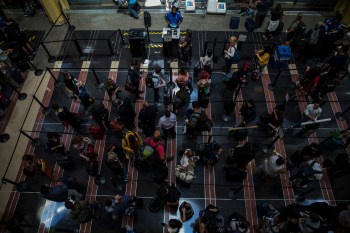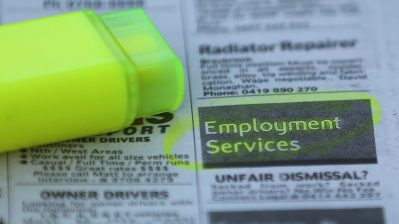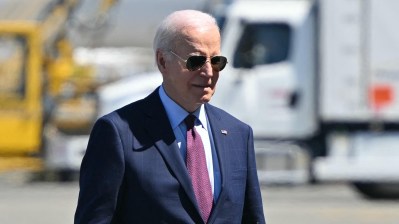
Electric aircraft companies are scrambling toward FAA certification as funding gets tight
Electric aircraft companies are scrambling toward FAA certification as funding gets tight

Almost eight years ago, the ride sharing company Uber released a research paper laying out a futuristic vision of the world where people could hop into small, electric aircraft in the middle of cities and fly over traffic, cutting loads of time off of their commutes.
Since then, many companies — by one estimate, hundreds globally — have sprouted up with the aim of making that vision a reality by developing electric vertical takeoff and landing aircraft, or eVTOLs.
To be successful, they’ll need to clear a big hurdle: certification from regulators. In the U.S., that’s the Federal Aviation Administration. And some companies are scrambling to get it done before they burn through all of their cash.
One company eyeing regulatory approval by 2025, but says it has the capital it needs now is Beta Technologies. In October, it opened a nearly 200,000-square-foot manufacturing facility in South Burlington, Vermont.
“We’ve got people over here building the structures of the aircraft,” said Kyle Clark, the company’s CEO and founder, stepping onto the manufacturing floor back in March, “on the far side, building the battery and propulsion, and upstairs in all the clean rooms, building the sensitive electronic components.”
And in a far corner of this hangar-like room, there’s a dark gray prototype of the electric aircraft that Beta’s developing. It looks a bit like two big drones carrying a futuristic minivan with a propeller on the back. The finished version will be gleaming white.
“So what you’re looking at here is actually a complete mock up that’s been put together and torn apart numerous times,” Clark said.
By tearing apart this mock up, the company is trying to work out the exact instructions for how to assemble its finished aircraft.
The fact that Beta has gotten to this point in about seven years is a testament both to how fast the eVTOL industry has developed and how far it still has to go.
Matthew Clarke, a professor of aerospace engineering at the University of Illinois Urbana-Champaign, compared the industry’s progress to a loading bar on an old computer. At first, it moved superfast.
“And then we’re here,” Clarke said. Here, according to Clarke, is about 80%. “And it’s going to stick there for a long time, until it gets to 100%,” he said.
That’s because that last 20% includes the huge hurdle of getting the OK from regulators to manufacture, sell and fly these futuristic electric aircraft.
“And this is an insanely rigorous process that has only gotten more rigorous in recent years,” said Elan Head, senior editor of the aviation industry publication The Air Current.
The certification process is rigorous because these are entirely new types of aircraft. Many of them are supposed to take off vertically and then fly like planes. They’re battery powered. Some companies even want them to fly without a human pilot. That means the FAA has had to develop new regulations and standards.
Essentially, Head said, the FAA is being meticulous to ensure these aircraft are safe.
“Which is difficult to do when you have a lot of new technology that doesn’t have a long track record that you can point to for determinations about reliability,” she said.
The eVTOL industry may have gotten a boost on the certification front last fall, when the FAA got a new administrator, Michael Whitaker. He came to the job directly from a division of the car company Hyundai Motor Group, which is developing eVTOLs. Though an FAA spokesperson said Whitaker does not oversee the certification process for eVTOLs, Elan Head said the industry benefits from him leading the FAA.
“Because he was already familiar with the space, the industry didn’t have to worry about educating him about the space,” she said.
But having an industry veteran at the helm doesn’t make the certification process any less expensive.
A few years ago, funding wasn’t an issue for most eVTOL companies. Cash was flowing freely. Some firms went public during the booming market of 2021, including through mergers with special purpose acquisition companies. Others, including Beta, got private investments and government grants. But the funding landscape has changed in the last three years.
“The higher interest rates have given investors more things to do with their money versus invest them in flying cars,” Head said.
And getting through certification is proving more costly than some companies expected, according to Matthew Clarke at the University of Illinois.
“Most of these companies don’t have that financial backing to get through that certification hurdle,” he said.
So out of the hundreds of companies in the sector, Clarke expects most won’t make it.
“I think what is going to happen is that you’re going to have a few companies, maybe five to 10, that actually have viable business products,” Clarke said.
Beta Technologies in Vermont is hoping it’s one of them.
But its first certified aircraft won’t be a self-flying air taxi that takes off like a helicopter. About a year ago, the company changed course: It would first aim to certify an electric aircraft that takes off and lands like a normal plane and mostly carries cargo.
“I think maybe it’s a Yankee pragmatism,” said CEO Kyle Clark with a laugh. And while Clark said Beta has enough financial backing to get its first aircraft certified, it will look for more as it aims to grow.
“If you ask any, you know, honest entrepreneur, ‘Are you raising money?’ You’re raising money 30 seconds after you sign your last deal,” he said.
Beta already has deals to sell its aircraft to UPS and other companies. Eventually, it envisions making an autonomous vertical takeoff and landing vehicle to carry people.
“So we end up at the same place,” Clark said. “And my contention is that by taking this step-wise approach and generating trust within the public and the FAA, we actually end up at the finish line faster.”
And, perhaps, with a bit more cash on hand.
There’s a lot happening in the world. Through it all, Marketplace is here for you.
You rely on Marketplace to break down the world’s events and tell you how it affects you in a fact-based, approachable way. We rely on your financial support to keep making that possible.
Your donation today powers the independent journalism that you rely on. For just $5/month, you can help sustain Marketplace so we can keep reporting on the things that matter to you.

















